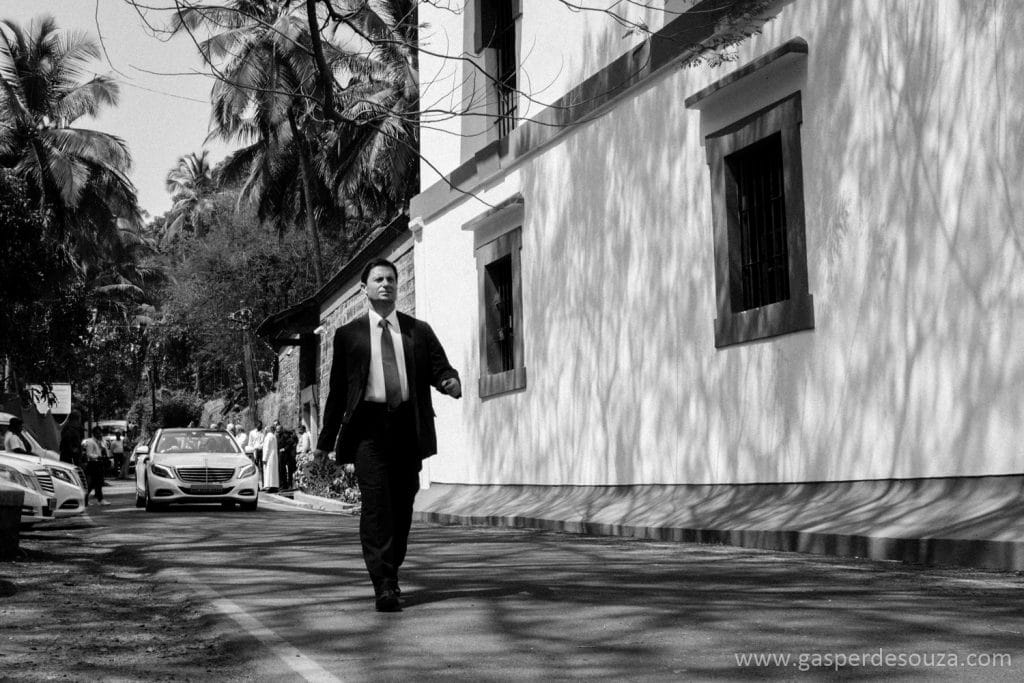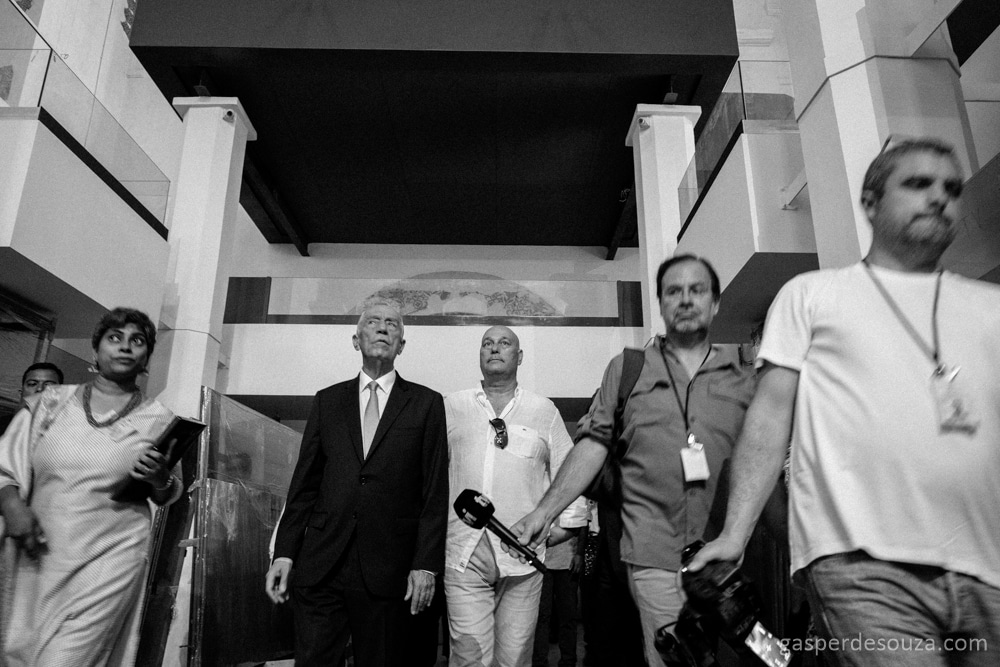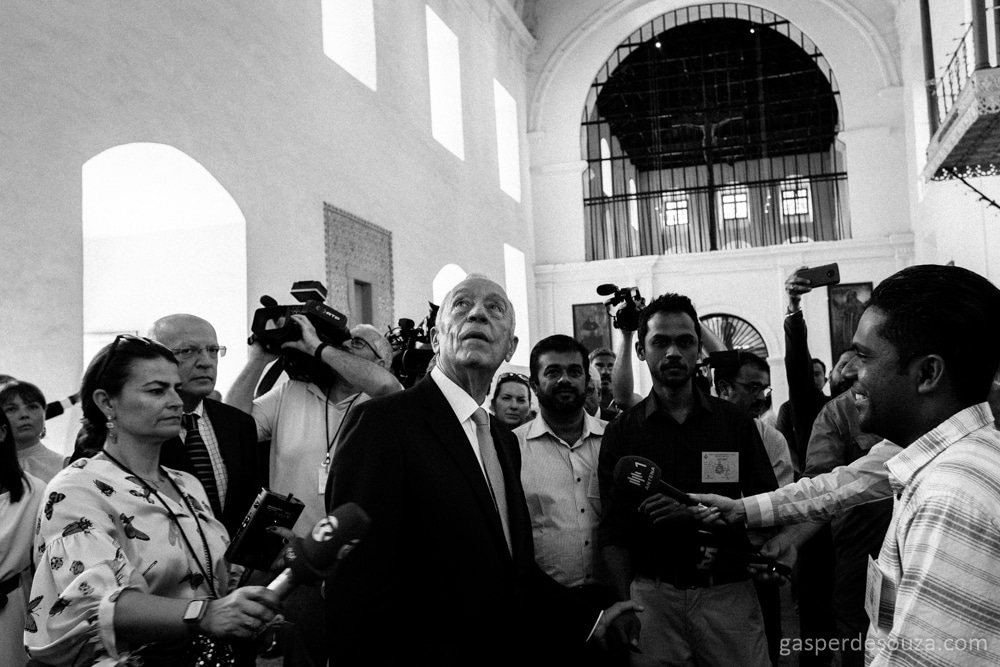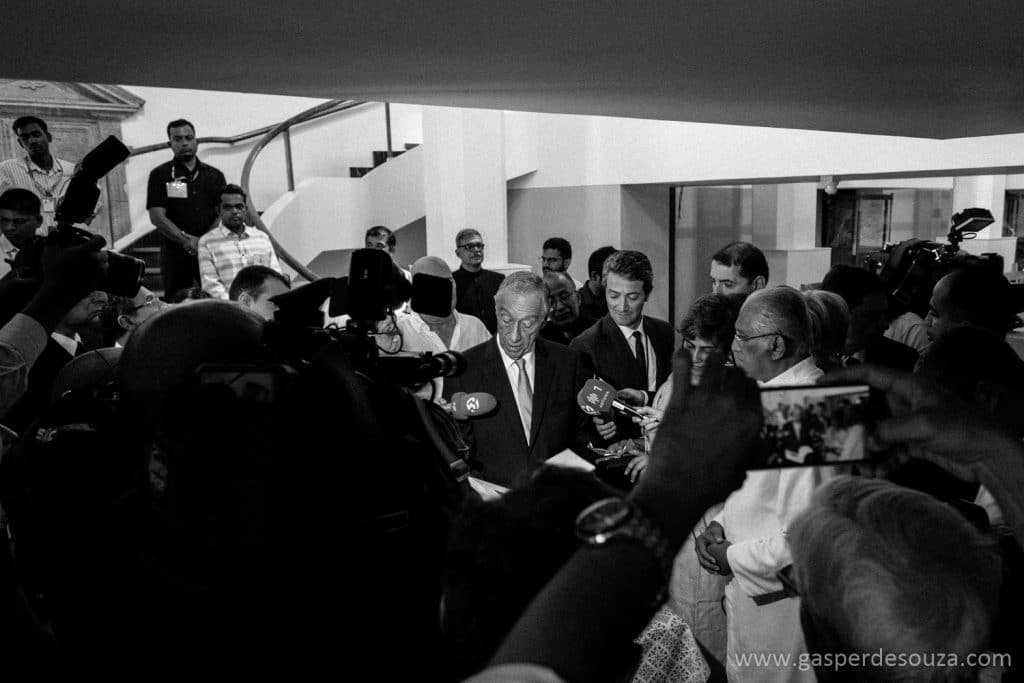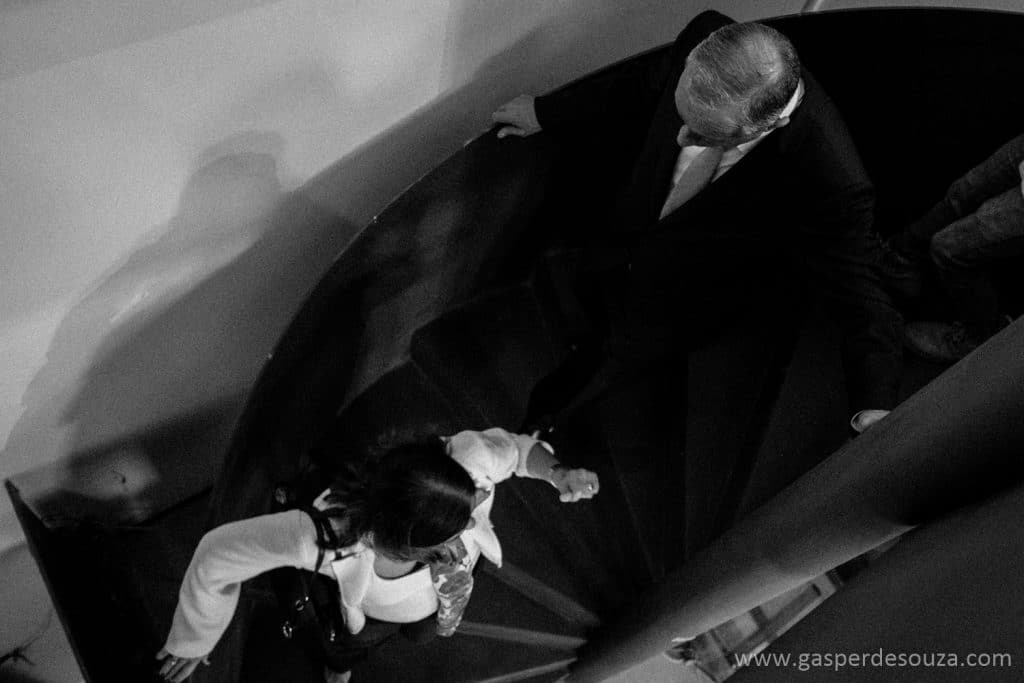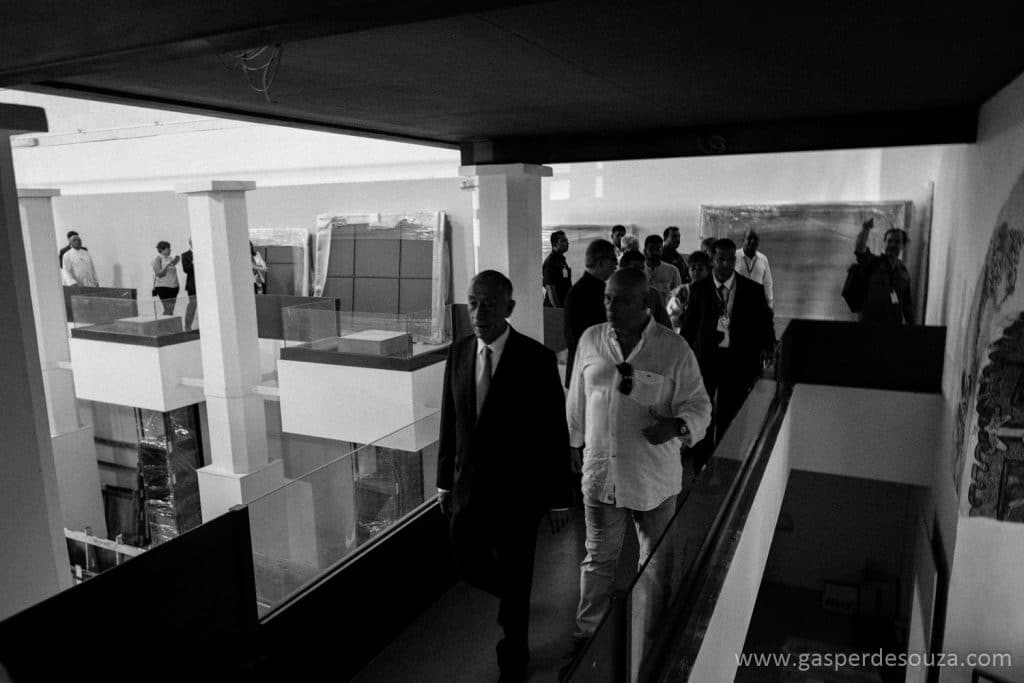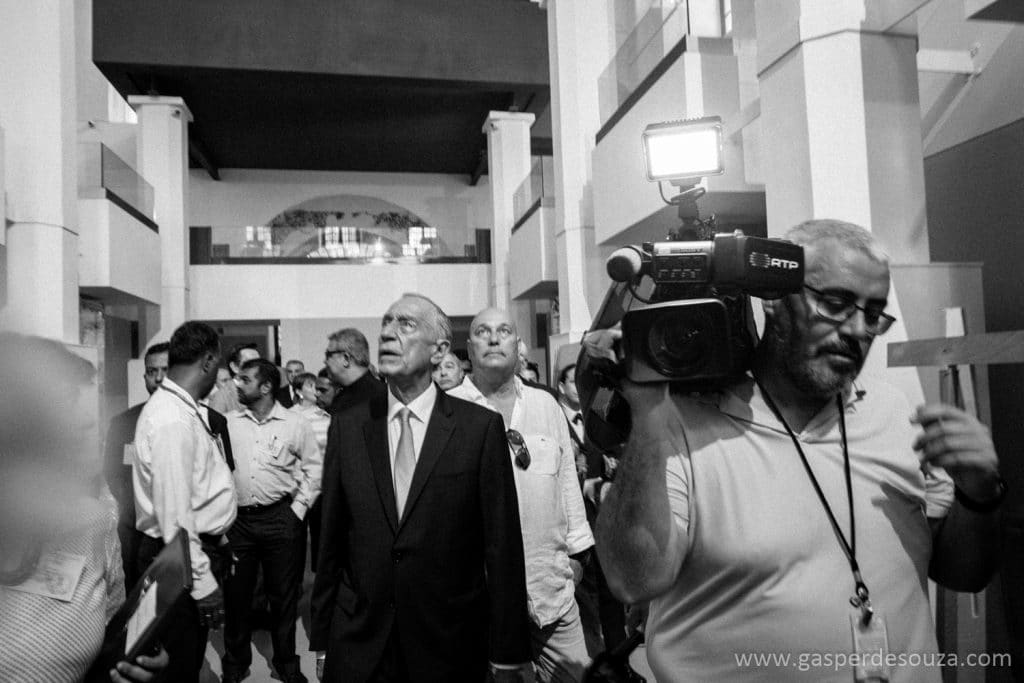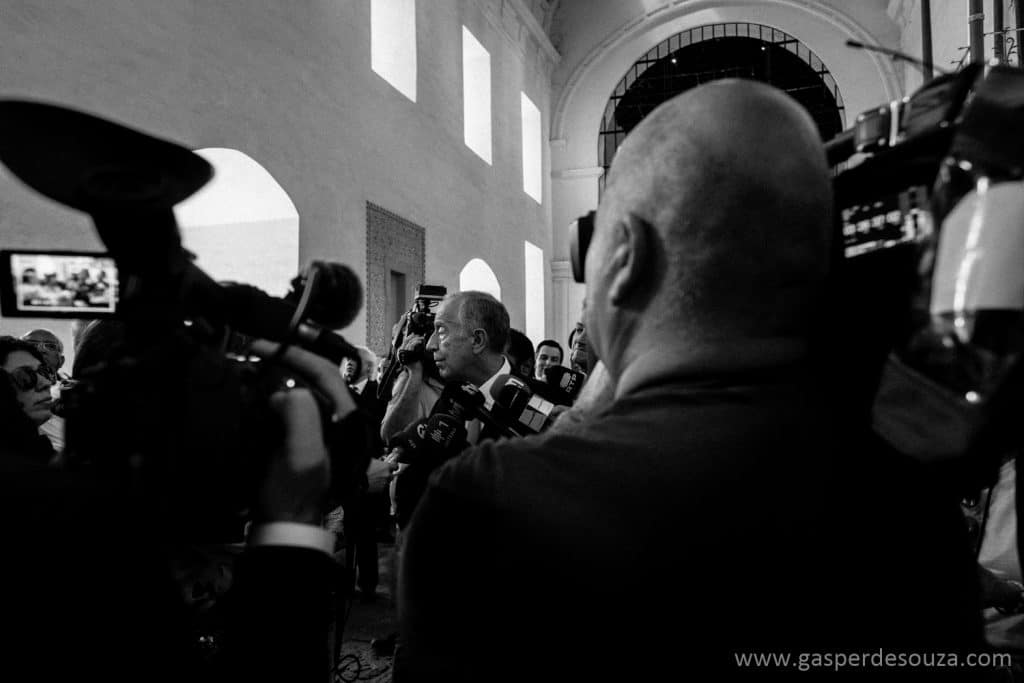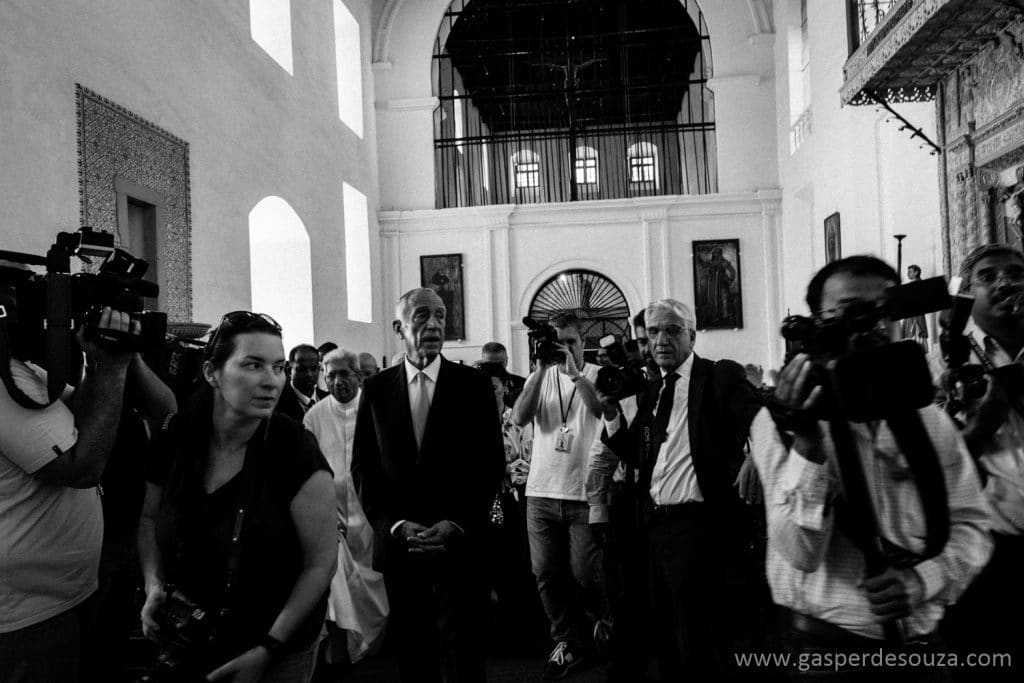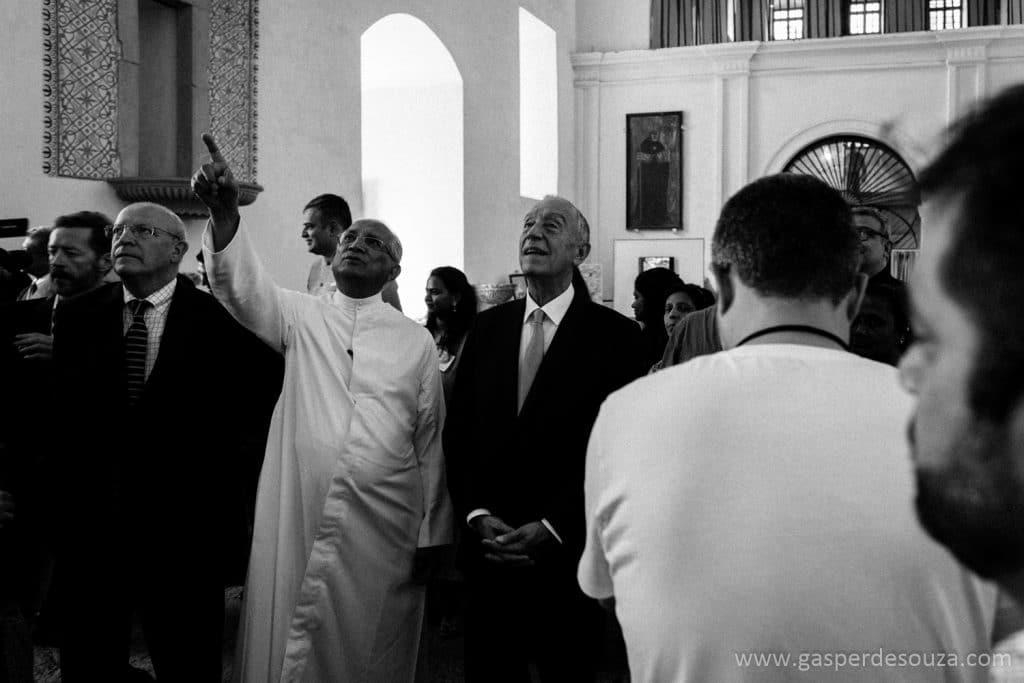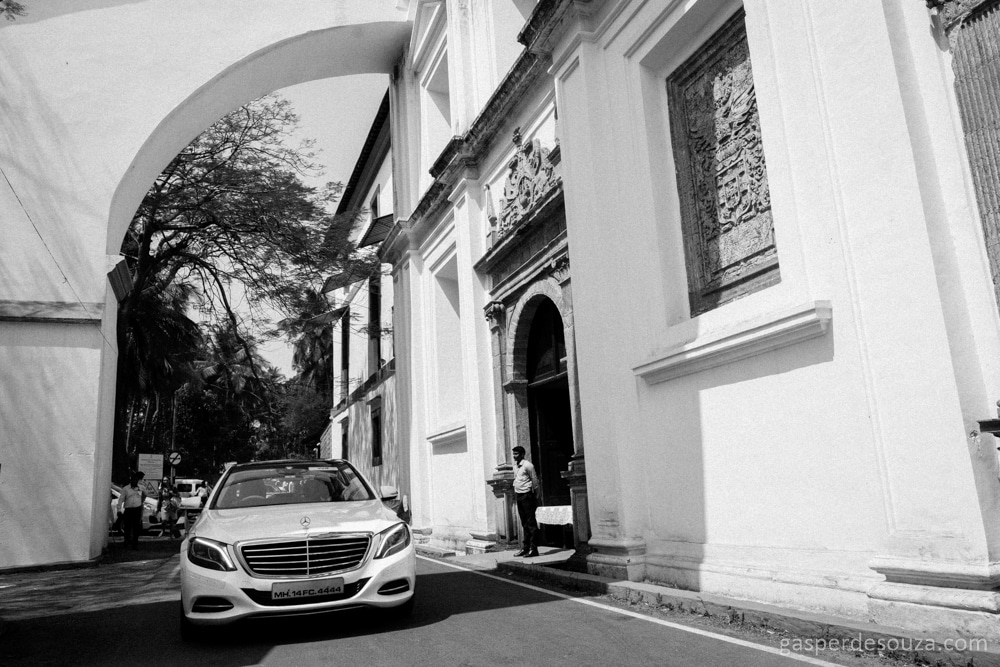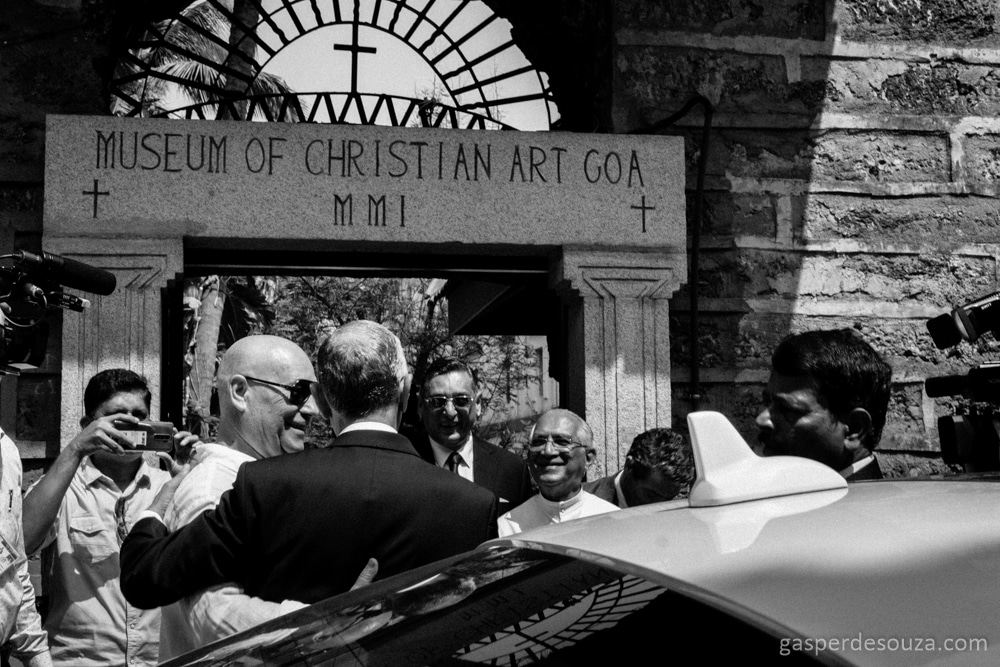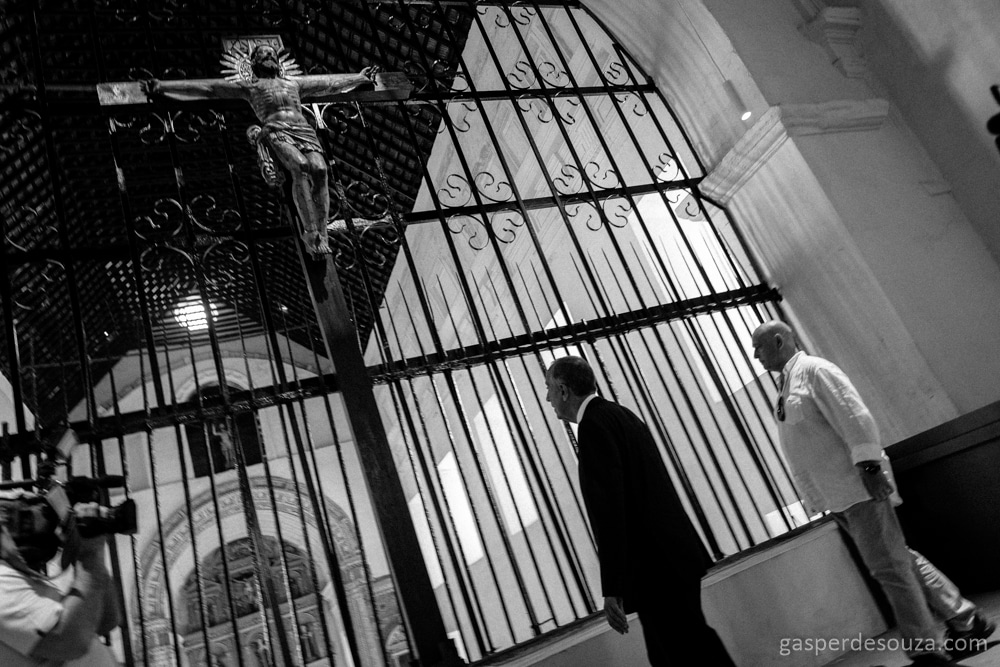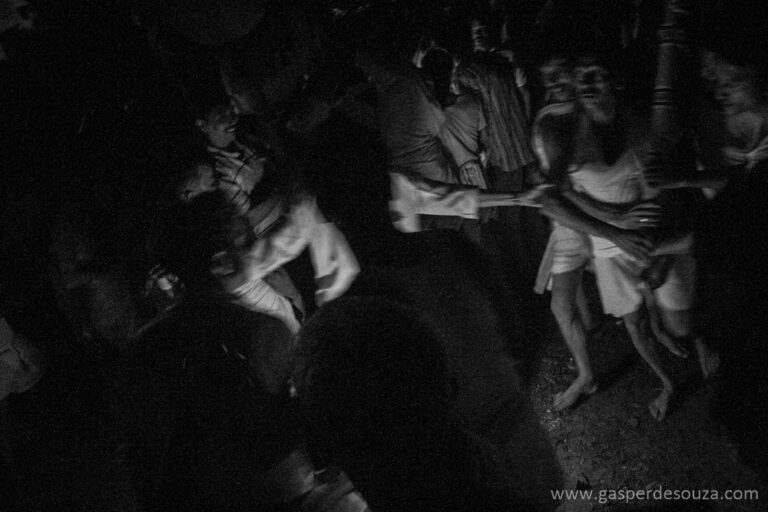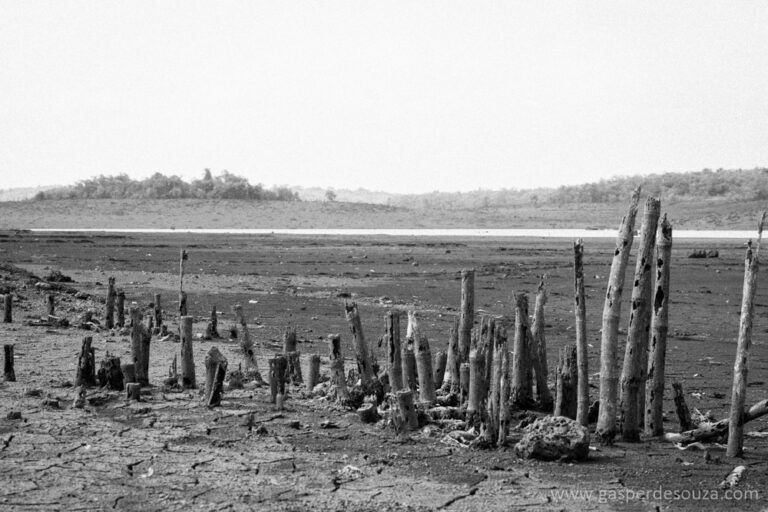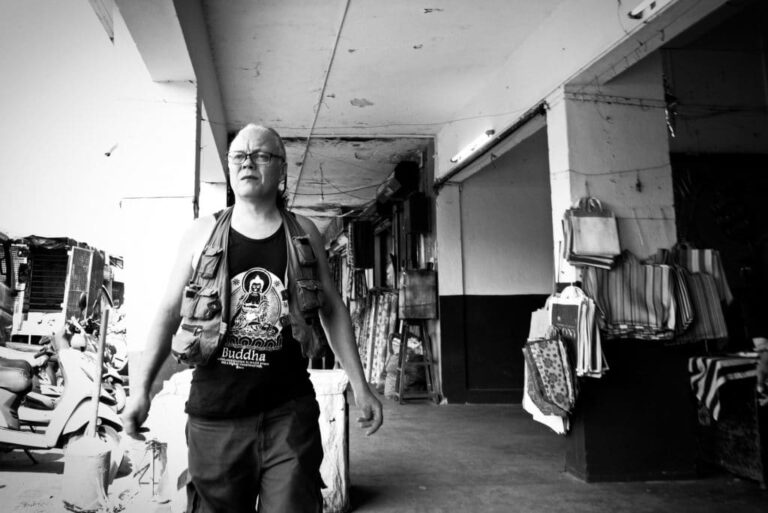When I received the message, asking me if I would cover the visit of the President of Portugal’s visit to the Museum of Christian art in Old Goa, I jumped at the opportunity. It’s not every day that a photojournalist gets an invitation to photograph the president of a nation. More so in a small state like Goa.
It was to be a quick visit. But the more I thought about it, the more nervous I got. As a documentary photographer, I like to think I’m creating documents for posterity. Its never about coverage in the everyday photojournalist’s sense of an assignment where the image will be used in the next day’s edition and then caste into the bins of time.
Thankfully, speaking to the Director of the Museum of Christian Art, I felt reassured they were not looking for traditional coverage. I knew I could approach the assignment my way.
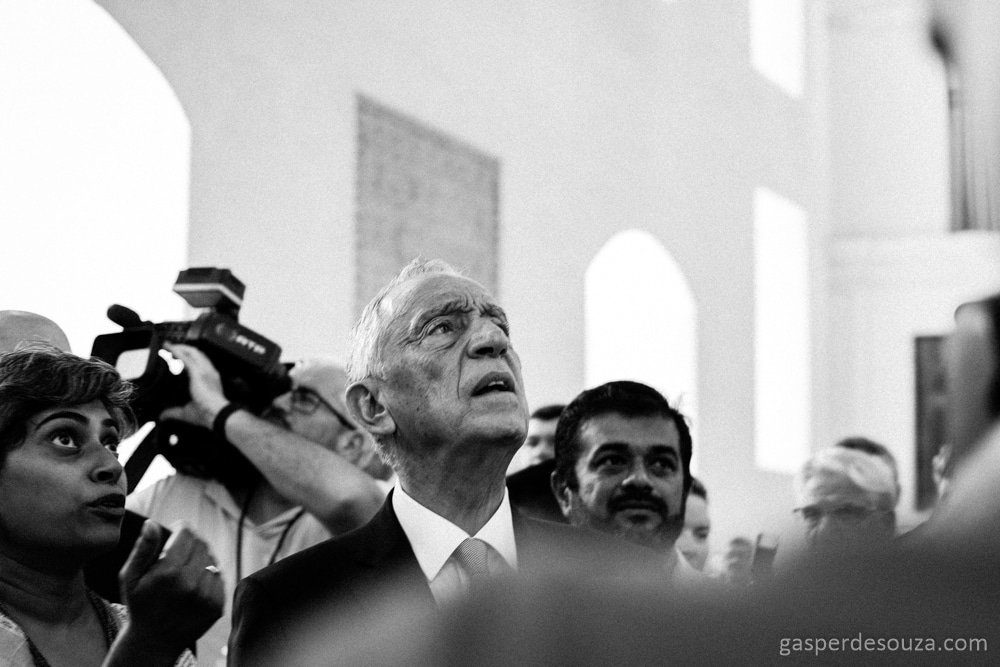
I have always been influenced by the best of photojournalism from Magnum, since the time I took up a camera back in 2005. That was when I undertook a year-long visual study of the fishing activities in Goa, thanks to a Fellowship from the Dempo Trust. I love the visual language of Magnum photographers – the stark images, the simple but profound compositions and yes – the black and whites – that timeless language of photojournalism.
Now, on the MoCA assignment, I was faced with a few choices to be made. The President would be visiting the church at Santa Monica convent and then walking through the museum. The church sixteenth-century church has been restored, and there’s the main altar beside the high ceiling, the light that comes in through the windows that go up to the roof of the church. All of that could make for impressive visuals. But the museum was under renovation. As such, there wasn’t anything to “see”. And it was going to be dark.
Since switching to the Fuji X-Trans system from Canon, I shoot with the XT2. I use the 16-56 zoom and three primes 16, 35 and 56mm. I did not have a flash as I rarely use one.
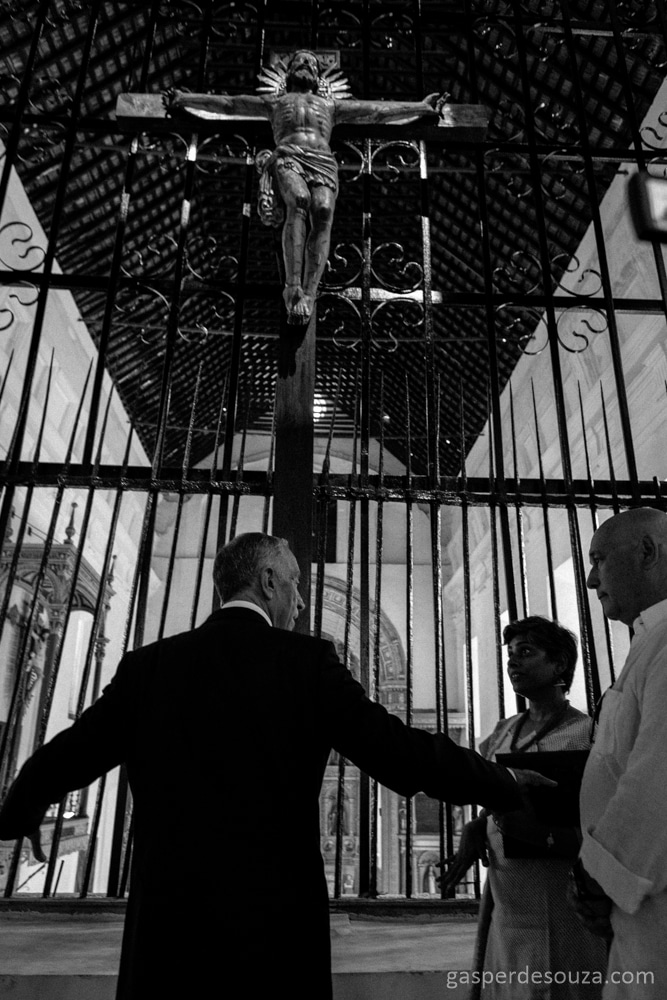
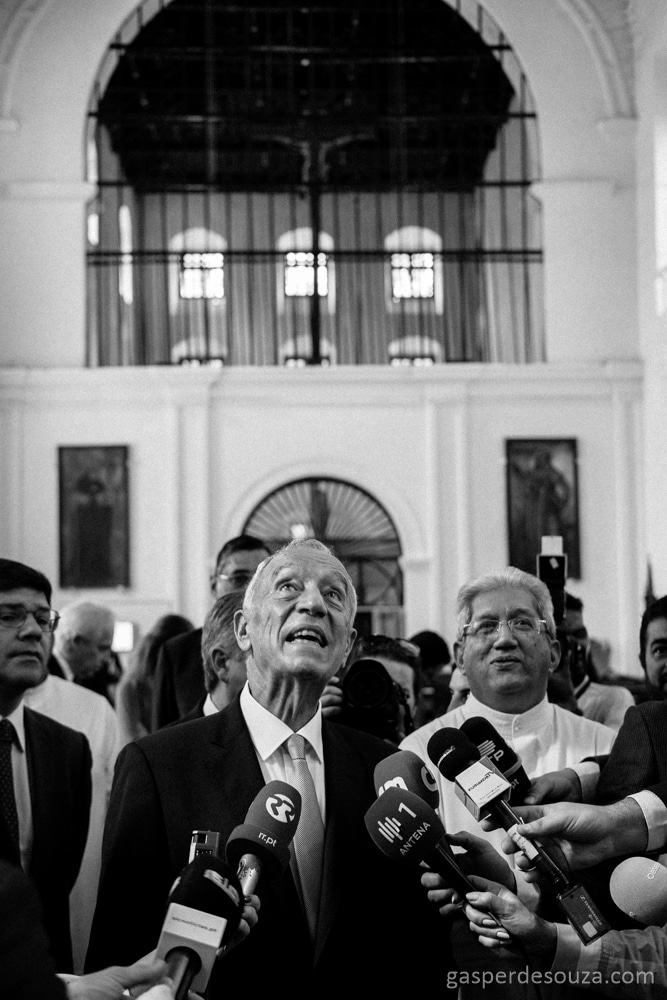
The question was what lenses and to flash or not to flash.
I decided not to risk it and went ahead and bought a Godox 685 speedlight for the Fuji. No point regretting in front of the President! Besides, the Museum also wanted a group shot that would include about 50 persons.
But I did risk it by ditching the zoom lens altogether. I believe in the words of that other great photojournalist – Frank Cappa who said, if your images are not good enough, you’re not close enough. So I like to shoot wide and close to my subjects as possible. Hence, I don’t use tele lenses for photojournalism.
I put a 16mm 1.4 on one XT2 and a 35mm 2.0 on another XT2. I put the Godox on the 16mm and thought I’d use it in case I needed it. The Fuji is so small and light, it makes movement even in tight situations a breeze.
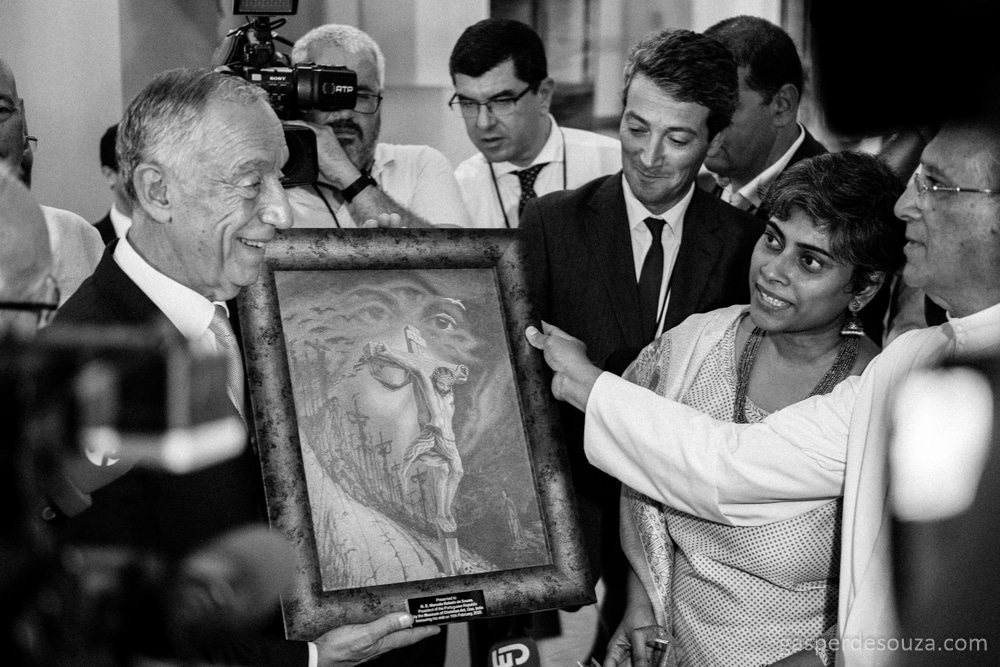
At the museum, there was a posse of press photographers and television crew. I knew I would have to get into the mix and deal with them. There would be no special official photographer privileges here!
What was interesting to me was the gear that the press still carried. The photojournalists were on their Canon and Nikon systems with the big zooms. The television crew were on their big bad TV cameras. I seemed to be the only one out there, shooting with the inconspicuous Fuji system.
Once the President arrived, it was frenetic. Everyone wanted their shots, and so the hordes followed the President through the church and museum. This is one time where I feel at an advantage due to my small physical frame. I never thought I’d actually be pleased with my 5f 2inch height and small physique! But that, coupled with the kind of gear I use, I’m able to get into tight spaces without creating ripples, get my shot and get away to the next vantage location. Thank you genes! And thank you Fuji!
The President was genuinely interested in the history, architecture and art of the church and the museum restoration work. And he displayed that awe as he took in the beauty and magnificence of the church. I wanted my photographs to depict that sense of wonder. I tried to incorporate elements of the location with the president and the rest of the people there, including the scurry of the photojournalists and television crew.
All through the shoot, I was in a zone I usually get when I’m doing pure journalism, and it felt good. I was using the two lenses seamlessly and did not use the flash even once.
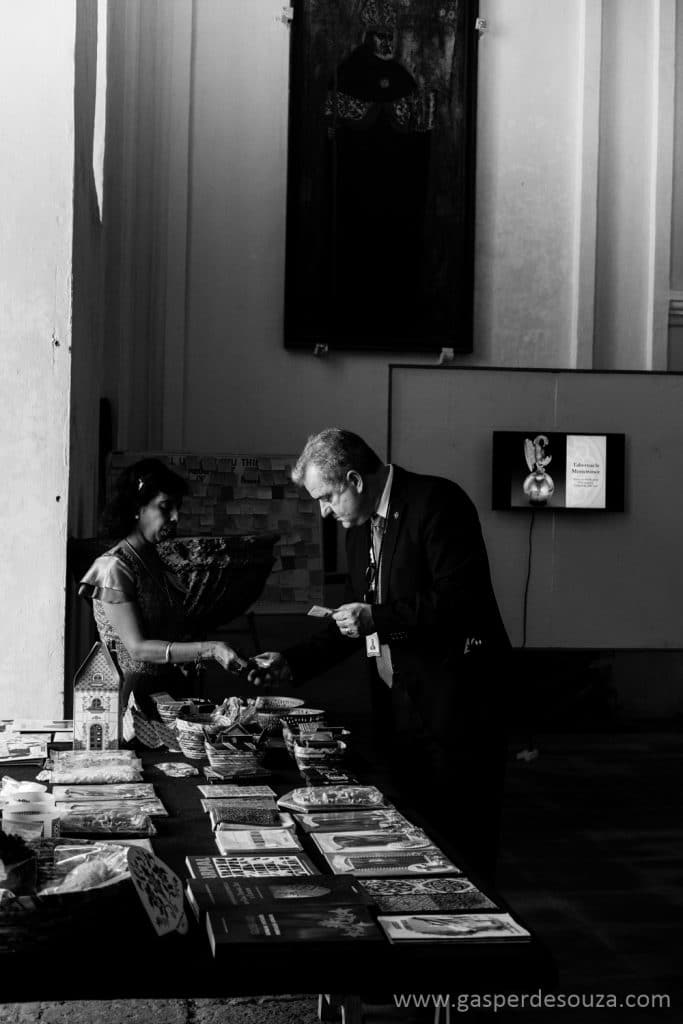
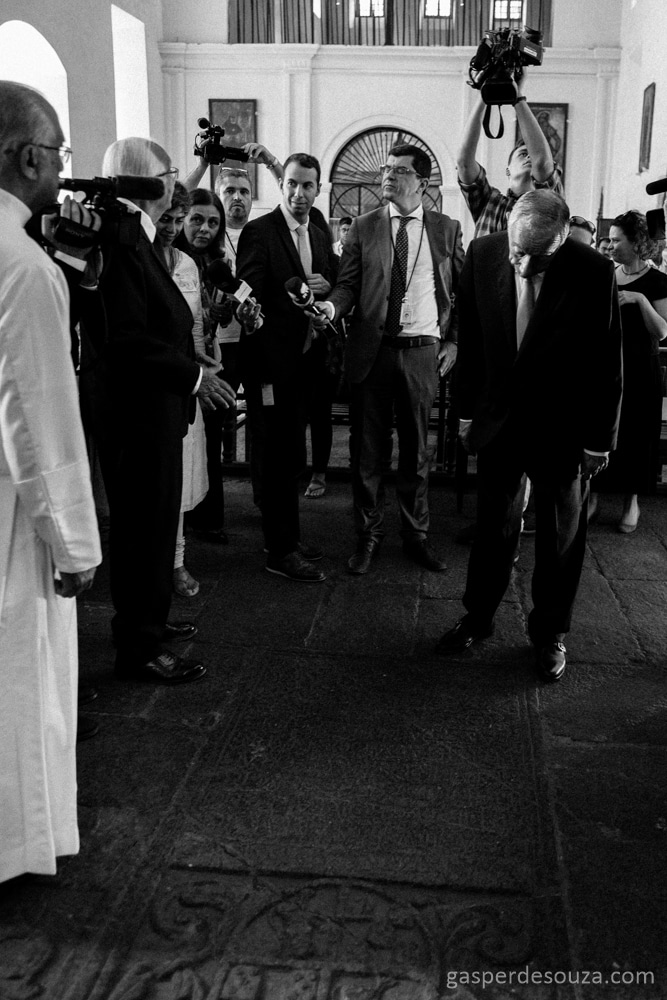
During the group shot, the press was all over the front, jostling each other for a vantage point. I’m usually not assertive by nature. I knew I needed to get myself in that mix. It was a must-have. With everything I had, I shoved my way into the thick of the swarm and took a few frames with the 35mm. I heard some grunting from behind, but then, I cared two hoots (and maybe something else too). I was now on my knees. I wanted a wider framing. There was no way to step back. So I brought up the 16mm and dropped the other to the stone floor. It was able to take a few more wide frames before the group dispersed.
Later, Natasha, the museum director asked me if my camera was fine. I think the Fuji is not just a small system, it’s also robust.
After the president arrived, it was a breeze and before I knew it, he was out of the museum. I shot for about 30 minutes and took around 1500 images.
Before I began the edit that afternoon after returning from the assignment, I seeped myself in the Magnum books in my collection and the website.
My edits were mainly black and whites which I feel bring out the facial expressions without the distractions of the colour of clothing and irrelevant details.
All-in-all it was a thrill. It’s moments that keep me going as a photojournalist/documentary photographer.
